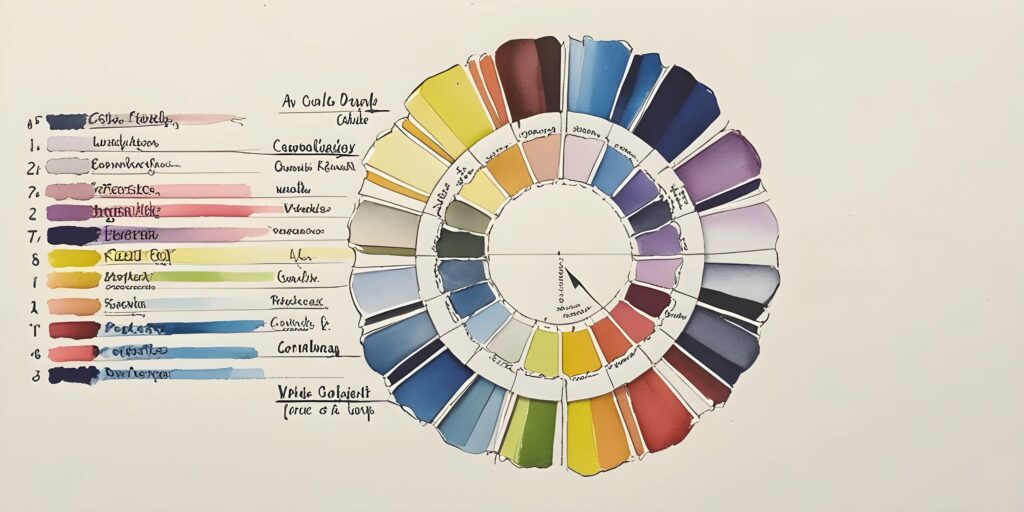The Invisible Power of Color: More Than Just Aesthetic
Imagine walking into a room bathed in deep red. Do you feel energized? A little anxious? Now, picture a space drenched in soft blue. Suddenly, a sense of calm washes over you. Coincidence? Absolutely not. The psychology of color meanings has been quietly influencing human behavior for centuries, from ancient rituals to modern marketing schemes.
Colors aren’t just an afterthought in design; they are master manipulators of emotion. The impact of colors extends beyond personal preference, shaping consumer behavior, brand perception, and even physiological responses. If you’ve ever bought something impulsively because it “felt right,” odds are, color played a role in that decision. Let’s break down how color psychology works and why businesses, designers, and advertisers swear by its power.
Why Color Psychology is No Joke
- Colors trigger emotions and influence decision-making.
- They can alter mood, energy levels, and even appetite.
- Industries use color strategically to manipulate perception.
Think color is just about aesthetics? Think again. The emotional effects of color are so deeply ingrained in our subconscious that they shape how we feel, act, and even spend money. For example, McDonald’s uses red and yellow because they stimulate hunger and urgency—two emotions that drive fast food sales.
Meanwhile, hospitals and wellness brands lean into soft blues and greens because they promote relaxation and trust. Ever wondered why Facebook and IBM drape themselves in blue? That’s not a coincidence—it’s calculated trust-building.
Decoding the Emotional Effects of Color
- Red: Stimulates appetite, urgency, and passion.
- Blue: Evokes calm, trust, and professionalism.
- Green: Symbolizes nature, growth, and balance.
- Yellow: Encourages optimism but can also cause anxiety.
- Black: Exudes power, luxury, and mystery.
Red is not for the faint-hearted. It screams urgency, which is why clearance sales love it. It also increases heart rate, making it the secret weapon of restaurants and dating apps alike. No wonder Coca-Cola swears by it—it practically forces you to reach for a soda.
Blue is red’s chill cousin. It’s the color of trust, security, and calm. That’s why corporate giants like PayPal and LinkedIn rely on it to make interactions feel safe. It’s also a favorite in office spaces because it enhances productivity without overstimulation.
Green is all about harmony and renewal. It’s often used by eco-friendly brands and wellness industries. Ever noticed how Starbucks wraps itself in green? It’s no accident—it subtly reinforces their sustainability efforts.
Yellow is the most cheerful yet potentially overwhelming of colors. It grabs attention faster than any other hue (hence road signs), but too much of it can cause stress. Studies even suggest that babies cry more in yellow rooms. Coincidence? Doubtful.
Black is the king of luxury and mystery. It’s why high-end brands like Chanel and Apple love it. It whispers sophistication, authority, and timeless appeal.
Color Symbolism in Marketing: The Ultimate Sales Trick
- Brands use color to build trust, create urgency, and shape perception.
- Warm tones (red, orange, yellow) drive excitement and impulse buying.
- Cool tones (blue, green) foster reliability and long-term relationships.
Marketing without color psychology is like a magician without tricks—utterly ineffective. Brands spend millions testing which colors make you feel safe, excited, or downright hungry. Tiffany & Co. has monopolized that signature blue to exude exclusivity. Meanwhile, banks intentionally avoid red because nobody wants to associate danger with their money.
Fast-paced industries like food and retail love warm tones because they encourage quick decisions. On the flip side, financial institutions and wellness brands rely on cool tones to build trust and stability. Ever noticed how airline companies like Delta and United Airlines favor blue? It’s because no one wants to feel anxious at 30,000 feet.
Interior Design: How Color Shapes Living Spaces
- Colors influence productivity, relaxation, and social behavior.
- Offices use blues and neutrals to enhance focus.
- Restaurants favor warm tones to boost appetite and conversation.
Interior designers don’t just pick colors for fun—they manipulate emotions through design. Corporate offices stick to blues and grays because they increase efficiency. Want a bedroom that promotes deep sleep? Soft blues and earthy greens are your best bet.
Restaurants, on the other hand, love warm shades. Ever noticed how your favorite café features deep oranges and reds? That’s because they encourage conversation and longer stays (which means more sales). Meanwhile, sterile white walls? They scream “hospital” rather than “cozy dinner spot.”
Mastering the Art of Color Psychology
Whether you’re designing a brand, decorating a space, or just choosing your next outfit, understanding the impact of colors gives you an undeniable edge. Colors aren’t just visual elements—they’re psychological tools that influence perception, emotion, and behavior.
So, the next time you find yourself inexplicably drawn to a certain product or feeling oddly relaxed in a blue-lit room, know that it’s not by chance. It’s science, strategy, and a little bit of artistic manipulation. Use it wisely, and you might just start controlling the world—one color at a time.
